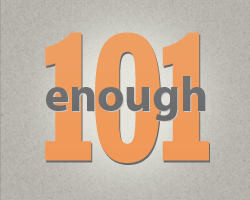
Editor’s Note: This post is a brief history, intended to provide a contextual background for understanding the complex issues that the Enough Project works on. It is part of the series Enough 101.
The M23 movement is a rebellion that is fighting the Armed Forces of the Democratic Republic of Congo, or FARDC, in eastern Congo. The movement, which is supported by Rwanda, began in late March 2012 with the defections of General Bosco “The Terminator” Ntaganda and an estimated 300 Congolese soldiers.
The rebellion took the name “M23” in recognition of March 23, 2009, the date of the peace treaty that integrated Ntaganda’s armed group (the National Congress for the Defense of the People, or CNDP) into the FARDC. The M23 rebels claim that the Congolese government has not held up its side of the agreement, and they say they are rebelling due to the "obvious failure of the integration of elements of political-military movements into the Congolese armed forces."
The CNDP was established in late 2006, and its armed wing officially disbanded with the treaty in 2009. When the CNDP integrated into the national army, Ntaganda—who earned his nicknamed “The Terminator” for his ruthless reputation—was given the rank of general, even though the International Criminal Court wanted him for war crimes on allegations that his previous rebel group used child soldiers. (The ICC has since issued a second arrest warrant for Ntaganda for war crimes and crimes against humanity committed under his command by the CNDP.)
From 2009 to 2012, Ntaganda’s former rebels operated under their own chain of command within the FARDC—an army within the army—and were able to consolidate control over eastern Congo’s natural resources (namely conflict minerals mining operations in areas rich in tin, tantalum, tungsten, and gold).
Ntaganda and his ex-CNDP troops enjoyed three years of control over smuggling routes and taxation rackets, but in early 2012, the Congolese army officers began to make moves to break up the ex-CNDP’s networks within the FARDC. At the same time, Ntaganda’s crimes began to catch up with him; earlier this year international pressure to arrest the general increased.
Each of these factors contributed to the wave of defections at the end of March and the beginning of April 2012.
As the ranks of defectors grew and attacks increased, the Congolese army brought in specially trained battalions to help regain control over the Kivus. After a series of battles, the mutineers moved to the highlands around Rutshuru and to Bunagana, on the border with Uganda, where they remain today.
At the end of June, an addendum to the United Nations Group of Experts report on Congo detailed Rwanda’s support of the M23, including heavy weaponry, troops, recruits, territory, and highly trained and organized fighters. The U.N.’s documentation of the support marked a significant development because Rwanda has a history of interventions in eastern Congo, either through their own troops or through backing of rebel groups, including the CNDP, on Congolese soil. Rwanda’s interest in eastern Congo stems from a variety of economic and political reasons.
By August, the fighting had displaced nearly half a million people, including more than 51,000 who fled to neighboring Uganda and Rwanda.
M23 is now thought to comprise around 1,500 troops and may be using the recent lull in fighting to train and strengthen their force. The Congolese government refuses to compromise with the rebels, leaving the future of the rebellion unknown, and the current phase of relative calm fragile.
Learn more: “Enough 101: Eastern Congo’s Armed Groups.”

